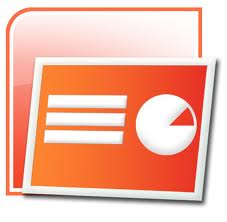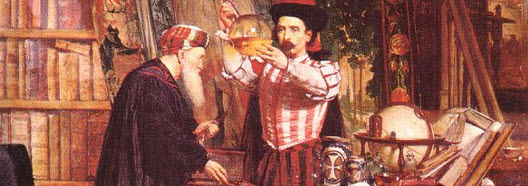Introduction to Chemistry
This unit gives students an introduction to many of the basic skills that will be needed throughout the year in chemistry. This includes measurement, using the metric system, performing calculations with significant digits, and differentiating between physical and chemical changes.
Icebreaker Activity - Chemistry Trivia and Jokes
Purpose: This is something fun and different to try for the first day of your chemistry class. Print out the worksheet. Make sure you use the double-sided option on your copier or printer. Cut out each of the individual boxes. Half of the boxes have some sort of trivia about a group of elements, while the other half has the answers. Give each student one box and have them find their partner in the room with the matching answer. When the two boxes are placed together, it reveals a chemistry joke that they can share with the class!
Essential Concepts: None for this activity.
Particulate Nature of Matter Powerpoint Lecture
 |
Purpose: This Powerpoint provides a basic outline of the important concepts from this chapter, starting with the roots of chemistry in philosophy, the introducing the scientific method before delving into the chemical and physical properties of matter and how they are measured.
Essential Concepts: Matter, scientific method, experimental design, experimental group, control group, independent variable, dependent variable, sample size, philosophy, significant figures, density, mass, volume, chemical properties, physical properties.
Particulate Nature of Matter Notes Outline
Purpose: This is a fillable notes outline to accompany the particulate nature of matter Powerpoint. These are helpful to use if you have students who struggle with effective note-taking and either write nothing down at all or try to write everything (and fail to listen to actual lecture).
Essential Concepts: Matter, scientific method, experimental design, experimental group, control group, independent variable, dependent variable, sample size, philosophy, significant figures, density, mass, volume, chemical properties, physical properties.
Mythbusters Scientific Method - "Who Gets Wetter"?
Purpose: The main premise behind the scientific method is that any phenomenon in nature can be explained given enough research, observation, and experimentation. This episode of Mythbusters provides a great example of the scientific method in action to answer the question of whether one gets wetter by walking or running through a rainstorm. This is one of the few episodes of Mythbusters where the viewer is shown the actual quantitative data collected by Adam and Jamie. Students can perform their own analysis of the data and form conclusions about the validity of the experiment.
Essential Concepts: Scientific method, experimental design, experimental group, control group, independent variable, dependent variable, sample size.
Measuring With Significant Figures Worksheet
Chemistry is one of the first classes where the importance of measuring accurately and precisely becomes clear. This worksheet will give brief instruction on how to use rulers, graduated cylinders, and balances, but the focus is on doing so within the rules for significant figures.
Essential concepts: Measurement, significant figures, significant digits, metric system, length, volume, mass.
Calculating Density with Significant Figures Worksheet
Purpose: Once students understand how to measure accurately and precisely, the next step is understanding the rules of rounding with significant figures when performing calculations. Determining density is a good place to introduce these rules, as both subtraction and division steps are necessary.
Essential Concepts: Significant figures, significant digits, rounding, mass, volume, density.
The Density Column
Purpose: This is a challenge activity that further reinforces the idea of density. Students will calculate the density of different-colored liquids and objects. They will then sketch how each of these liquids and objects would layer if they were placed in a single beaker.
Essential Concepts: Density, mass, volume.
Elements, Compounds, and Mixtures
Purpose: This is a simple instructional worksheet that uses drawings to contrast atoms and molecules, as well as elements, compounds, and mixtures.
Essential Concepts: Elements, compounds, mixtures, atoms, molecules, pure substance.
States of Matter and Phase Changes Worksheet
Purpose: This worksheet will give the students some instruction and practice with the behavior of atoms and molecules in the three main states of matter:solid, liquid, and gas. The relationship between these states and temperature will also be explained.
Essential Concepts: Matter, atoms, molecules, states of matter, solid, liquid, gas, temperature.
Classifying Chemical and Physical Properties and Changes Worksheet
Purpose: Chemical and physical properties, as well as chemical and physical changes are one of those concepts that every chemistry class starts with. This worksheet gives students a little background instruction on each idea, then has them practice classifying different properties and changes.
Essential Concepts: Physical properties, chemical properties, physical changes, chemical changes.
Chemthink: Particulate Nature of Matter
Purpose: The Chemthink website has a series of interactive modules that help to instruct students on some of the basic, fundamental concepts of chemistry. The particulate nature of matter module is the first one in the series, and does an excellent job of demonstrating the differences between atoms, molecules, elements, compounds, and mixtures. Additionally, students will be able to visualize how particles behave differently as solids, liquids, and compounds.
Essential Concepts: Matter, atoms, molecules, elements, compounds, mixtures, solids, liquids, gases.
Introduction to Chemistry Study Guide
Purpose: Once the instruction for the unit is completed, students can complete this study guide to aid in their preparation for a written test. The study guide is divided into two sections: vocabulary and short answer questions. The vocabulary words can be found scattered throughout the different instructional worksheets from this unit. The short answer questions are conceptual and meant to see if the students are able to apply what they've learned in the unit.
